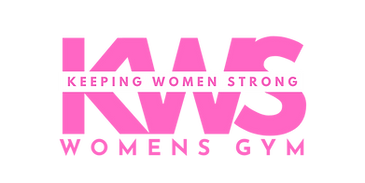ZONE 2 Training Explained: The keys to Endurance, Energy & Health
- helenfkws
- Jul 26
- 3 min read
Updated: Aug 31

What is ZONE 2 Training?
ZONE 2 training is low-to-moderate intensity aerobic exercise performed at a pace where you can still hold a conversation.
It sits around 60–70% of your maximum heart rate — enough to make your body work, but gentle enough to sustain for longer periods.
Think: low impact group class, brisk walking/incline treadmill, cross-trainer, rebounding, easy jogging, cycling, or rowing where you're moving steadily without gasping for air.
When used as part of a balanced exercise routine, Zone 2 training delivers powerful benefits.
Why ZONE 2 Matters — Especially for Women Over 40
As we age, particularly after 40 our metabolism slows (often from irregular activity due to family, work and life commitments), hormonal changes and mitochondrial efficiency (how our cells produce energy).
Zone 2 Training:
Gets you moving again as you work on getting fit, strong and balanced again.
Improves fat metabolism and energy production
Supports heart and lung health
Helps regulate blood sugar and insulin
Increases stamina and recovery capacity
Boosts mental clarity and mood
Reduces the risk of chronic diseases
It’s particularly powerful for women navigating fatigue, or stubborn weight issues — because it builds a stronger aerobic base without overtaxing the body.
Is ZONE 2 Enough on Its Own? ...NO!!
It offers good health benefits, but on its own, it's NOT enough to maintain full-body strength and bone density as we age.
To age powerfully, women over 40 need a balanced exercise and lifestyle routine with a combination of:
Strength/Resistance Training (to maintain lean muscle and prevent bone loss)
Short Bursts of Higher-Intensity Cardio (to support heart health and fat metabolism)
ZONE 2 Aerobic Training
Protein-rich, whole food nutrition
Supportive lifestyle habits (Sleep, Stress, Positive Mind Set)
Short Bursts of High-Intensity Cardio - Key Benefits
1. Time-Efficient Fitness
Just a few minutes of effort can deliver big results.
Ideal for busy women who want maximum return in less time.
2. Boosts Heart & Lung Health
Improves cardiovascular endurance by pushing the heart into higher zones.
Trains your body to recover faster between efforts.
3. Fat-Burning Power
Short, intense bursts elevate metabolism for hours after exercise (the “afterburn effect”).
Helps improve insulin sensitivity and fat utilization.
4. Builds Mental Toughness
Learning to push through short bursts trains resilience and grit.
Creates a sense of accomplishment with every session.
5. Supports Strength & Longevity
Improves muscle efficiency and power output.
Preserves lean muscle while burning fat when combined with strength training.
6. Hormone & Brain Boost
Stimulates endorphins (“feel-good” hormones) for mood and stress relief.
May improve cognitive function and protect brain health.
Short Bursts of Higher-Intensity Cardio are best when combined with Zone 2 training and strength work for a well-rounded, age-powerful fitness routine.
How to Do ZONE 2 Training?
You’re in ZONE 2 when:
You can breathe through your nose
You can talk but not sing
You feel comfortably challenged, not breathless
Start with:
30+ minutes, 2–4 times per week
Activities like brisk walking, incline treadmill, cycling, steady low-impact circuit or group class or swimming,
You can use a heart rate monitor to stay in the right range or simply tune into your effort and breath.
When to Do ZONE 2 for Best Results
Morning sessions can help set your metabolism for the day
On non-strength days, as active recovery
After strength training (shorter durations)
As a stress-reducing, mood-boosting practice anytime
After dinner to help stabilize blood sugar
Consistency is more important than timing — aim to build a weekly habit that fits your routine.

Heart Rate for BURSTS of Higher Intensity Cardio
1. Work from Your Max Heart Rate (MHR)
Formula (rough guide): 220 – your age = MHR
Example: At age 50 → 220 – 50 = 170 bpm max
2. Higher Intensity Training = Zone 4–5
Zone 4 (Hard Effort): 80–90% of MHR
-Breathing heavy, can only speak a few words.
-Example (50 y/o): ~136–153 bpm
Zone 5 (All-Out Effort): 90–100% of MHR
-Breathless, unsustainable for long.
-Example (50 y/o): ~153–170 bpm
3. How It Feels
Can’t chat easily (unlike ZONE 2).
Short bursts, recover between efforts.
Think: Faster pace (push to burn) on machines and higher effort in class moves, power walks up hill, bike intervals, step intervals, Slam ball minutes, treadmill intervals, rower blasts.
4. Benefits
Improves VO₂ max (your body’s oxygen uptake).
Builds power, speed, and recovery capacity.
Great complement to Zone 2 for full-spectrum fitness.
Quick Cue:
If you can chat = Zone 2.
If you can only gasp a few words = Zone 4.
If you can’t talk at all = Zone 5.




Comments